Reviving a Failing Business: A Strategic Conversation with Alex Hormozi
In this insightful session, we dive deep into the struggles of a legal attorney serving the Latin music industry, who is on the brink of losing his business. Together, we explore actionable strategies to pivot from losses to profitability, leveraging existing resources and redefining the service model for success.
Introduction to the Situation
In today’s fast-paced business environment, many entrepreneurs face daunting challenges that can threaten their very existence. Our case study revolves around a legal attorney specializing in the Latin music industry, struggling with significant financial losses. With just six months of cash left, he stands at a critical crossroads. The good news? There are actionable solutions to turn this ship around.
Understanding Current Financials
The first step in any turnaround strategy is a clear understanding of the current financial situation. Our attorney reports a revenue of $300,000 over the past year, but the profit tells a different story: a loss of $100,000. This stark contrast highlights the urgent need for financial restructuring.
To dive deeper, we need to dissect the business units—services, education, and software. While the services unit has shown some profitability, the overall financial health is alarming, with losses primarily stemming from the education and software sectors.

Analysis of Revenue Streams
Breaking down revenue streams is crucial. The services unit generated $131,000, yielding a modest profit of $10,000. In contrast, the education unit also brought in $131,000 but incurred significant losses, complicating the overall financial picture. The software unit, however, remains a burden, contributing to a loss of $110,000.
This analysis reveals that while there are pockets of profitability, the overall structure is unsustainable. A strategic focus on the services unit could yield quicker financial recovery, especially considering the existing demand in the Latin music industry.
Identifying Customer Acquisition Channels
Understanding how customers are acquired is paramount to reshaping the business model. Currently, most customers come from YouTube, with around 90,000 subscribers. This platform serves as a primary avenue for generating leads, converting about 2% of the traffic into potential clients.
Interestingly, Instagram is where conversions happen. Many customers reach out via direct messages (DMs), indicating a strong engagement that isn’t fully harnessed. This highlights an opportunity: optimizing the call-to-action strategies on YouTube to direct traffic more effectively to the Instagram page, where actual sales occur.
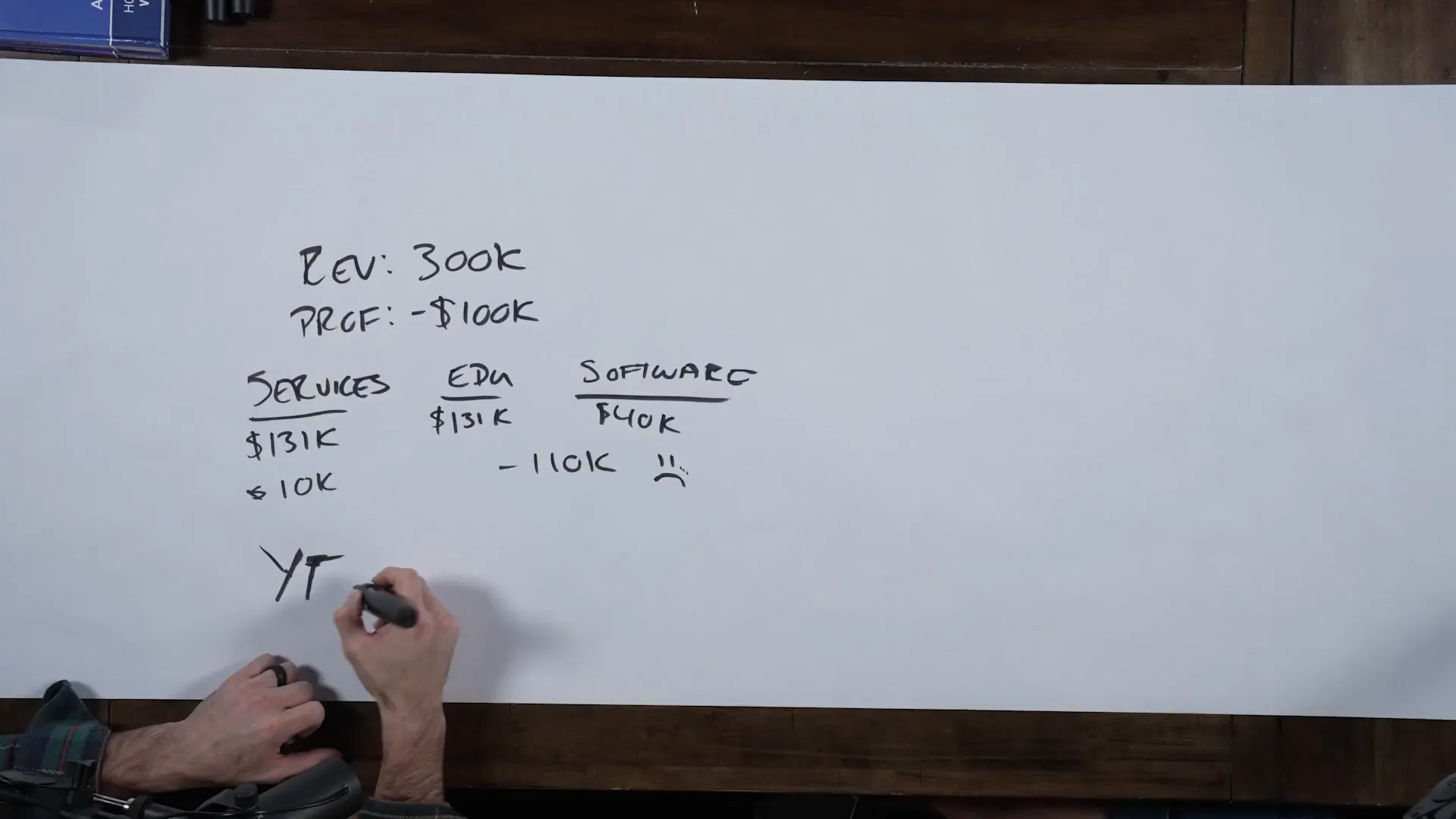
The Role of Social Media in Sales
Social media plays a pivotal role in the sales process. With YouTube as the primary content hub and Instagram as the conversion tool, the synergy between these platforms can be leveraged for greater impact. Currently, the call-to-action directs users to the website, but many bypass it to interact directly on Instagram. This unconventional pathway needs to be acknowledged and optimized.
To capitalize on this, the attorney can enhance engagement strategies on Instagram, making it clear that inquiries can lead to direct consultations or services. This not only streamlines the customer journey but also maximizes the potential for conversions.

Service vs. Education: Profitability Breakdown
When comparing the profitability of services versus education, the results are telling. Services generate revenue through consultations, charging $250 per hour. This model is straightforward and has proven to be effective. On the other hand, the education sector, despite generating similar revenue, incurs higher costs and losses, indicating a need for reevaluation.
By focusing on the services that offer immediate cash flow and profitability, the attorney can stabilize the business. The education side can be restructured or even phased out if it continues to drain resources without contributing to the bottom line.
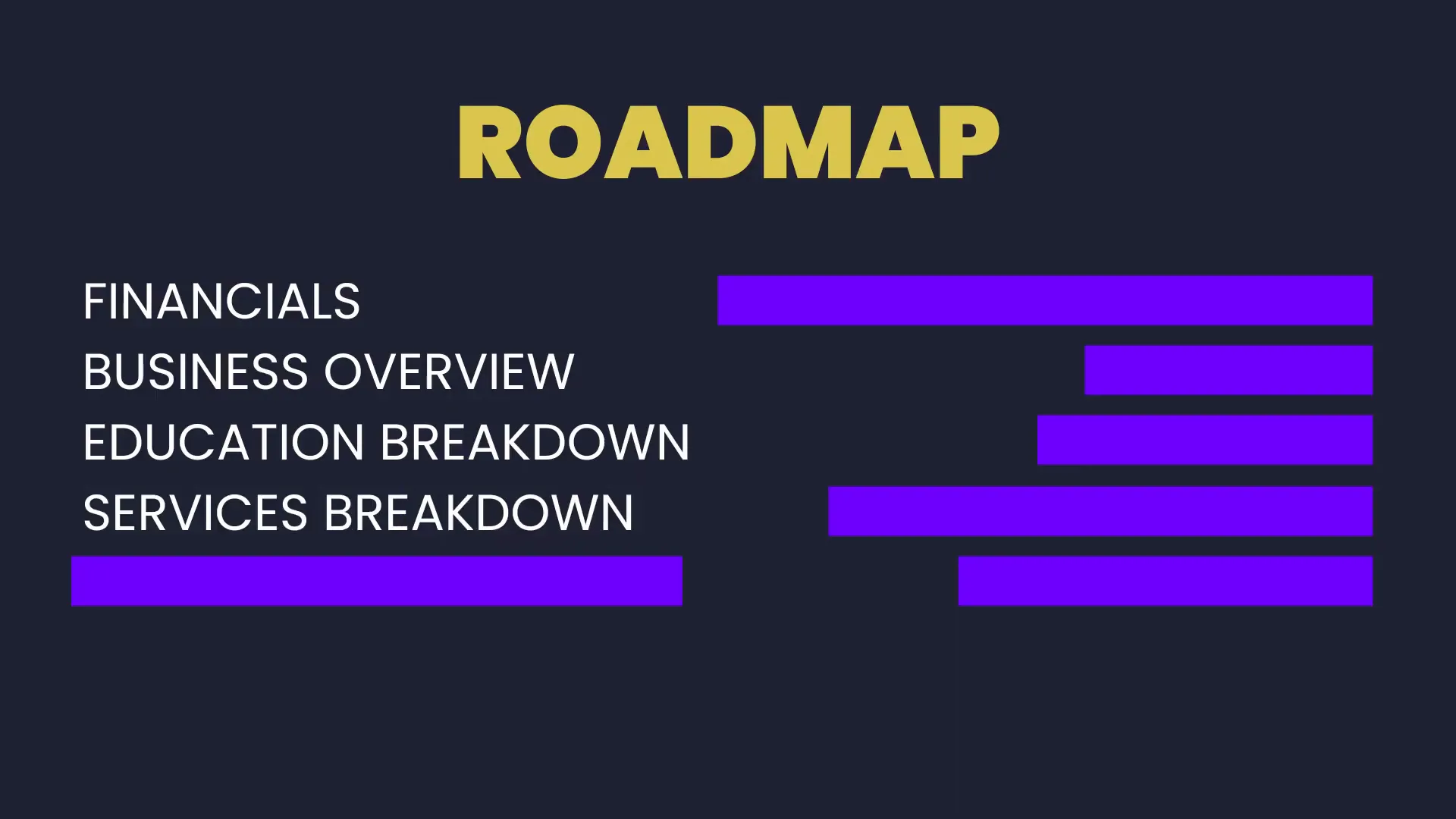
Exploring the Software Component
The software component of the business is a critical element that needs careful evaluation. Currently, the software is tied to Instagram, serving as a platform for clients to access contract templates. This integration allows users to quickly obtain necessary legal documents, but there’s a catch: many users download the contracts and disengage. This churn highlights a gap in the value proposition.
To optimize the software's utility, we need to shift the focus from merely providing contracts to offering a comprehensive service that includes ongoing support and education. By doing so, we can reduce churn and enhance customer loyalty.

The Importance of Supply and Demand
Understanding the dynamics of supply and demand is crucial for pricing strategies. When supply is low and demand is high, prices can increase significantly. In our case, the attorney has inadvertently created a cheaper alternative that dilutes the value of their primary offerings. Instead of lowering prices, the focus should be on enhancing the perceived value, thereby allowing for higher pricing.
For instance, if clients see the value in the services offered, they are more likely to pay premium prices. This shift requires a strategic marketing approach to communicate the benefits effectively.

Reassessing the Education and Software Offerings
The education sector, while not currently profitable, plays a vital role in the brand's community outreach. With over 800 participants who have invested in lifetime memberships, the educational content serves as a foundation for building relationships and trust within the community. However, it's essential to evaluate whether this offering can stand alone without the burden of the software.
It appears the education arm can break even without the software's costs. This indicates that a strategic pivot could involve either enhancing the education offering or streamlining the software component to align better with user needs.

Strategies for Profitability
To achieve profitability, the focus should be on the services that are already generating income. The service unit has shown promising results, with revenue surpassing initial projections. This positive trend indicates a clear path forward: concentrate on scaling the service offerings while minimizing losses from less profitable sectors.
Implementing a tiered pricing model for services can also enhance profitability. For instance, offering packages based on outcomes rather than hourly rates can incentivize clients to engage more deeply with the services. This model aligns the interests of both the client and the attorney, fostering a more collaborative relationship.
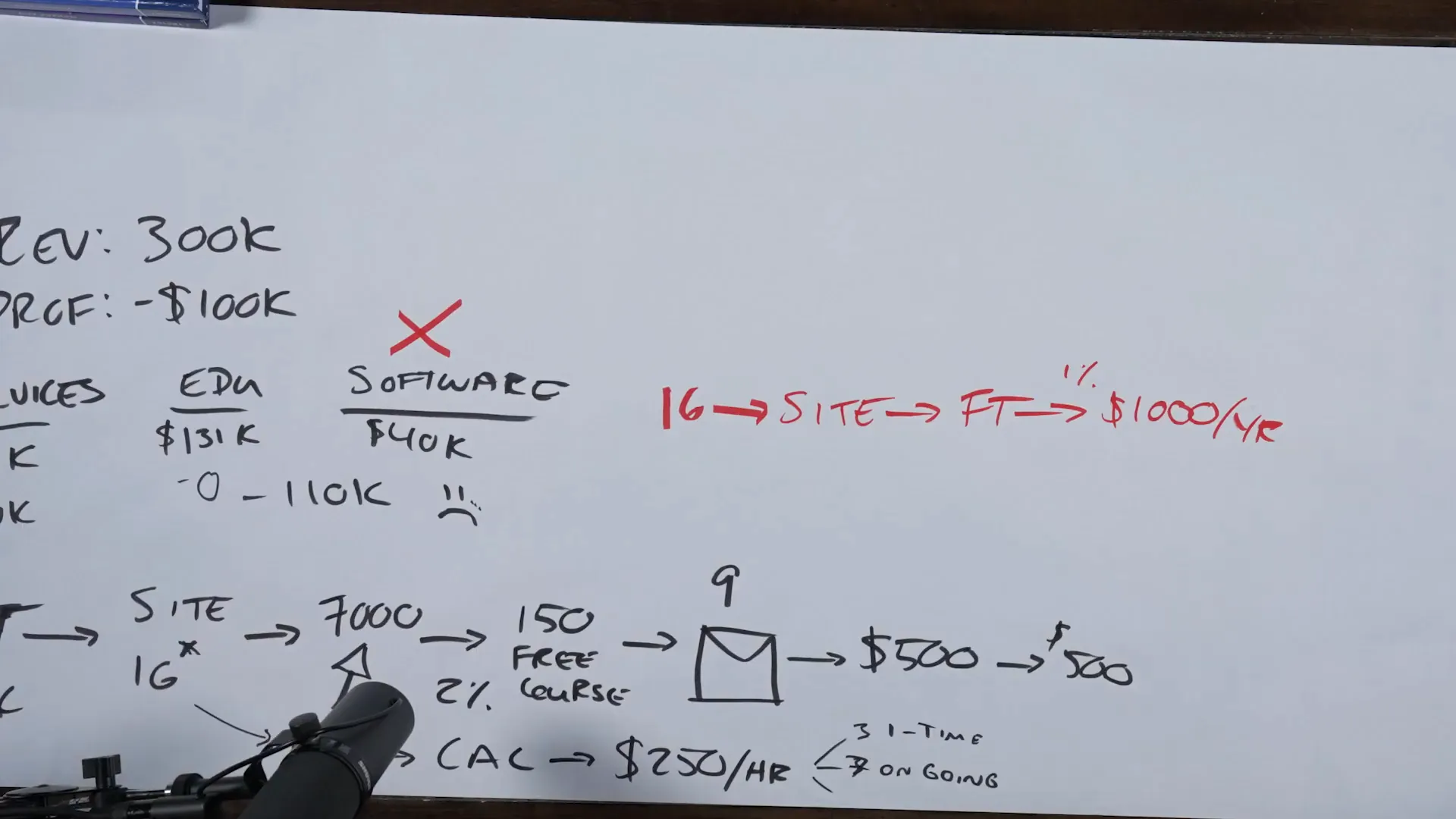
Redefining the Business Model
It's time to rethink the overall business model. By focusing on the services that generate revenue and reducing or eliminating the software component, the attorney can streamline operations. This simplification allows for a clearer focus on client needs and the delivery of high-quality services that can command higher prices.
Additionally, the attorney can leverage existing platforms like YouTube and Instagram to funnel potential clients directly to service offerings. By embedding clear calls to action in content, the business can effectively convert viewers into paying clients.
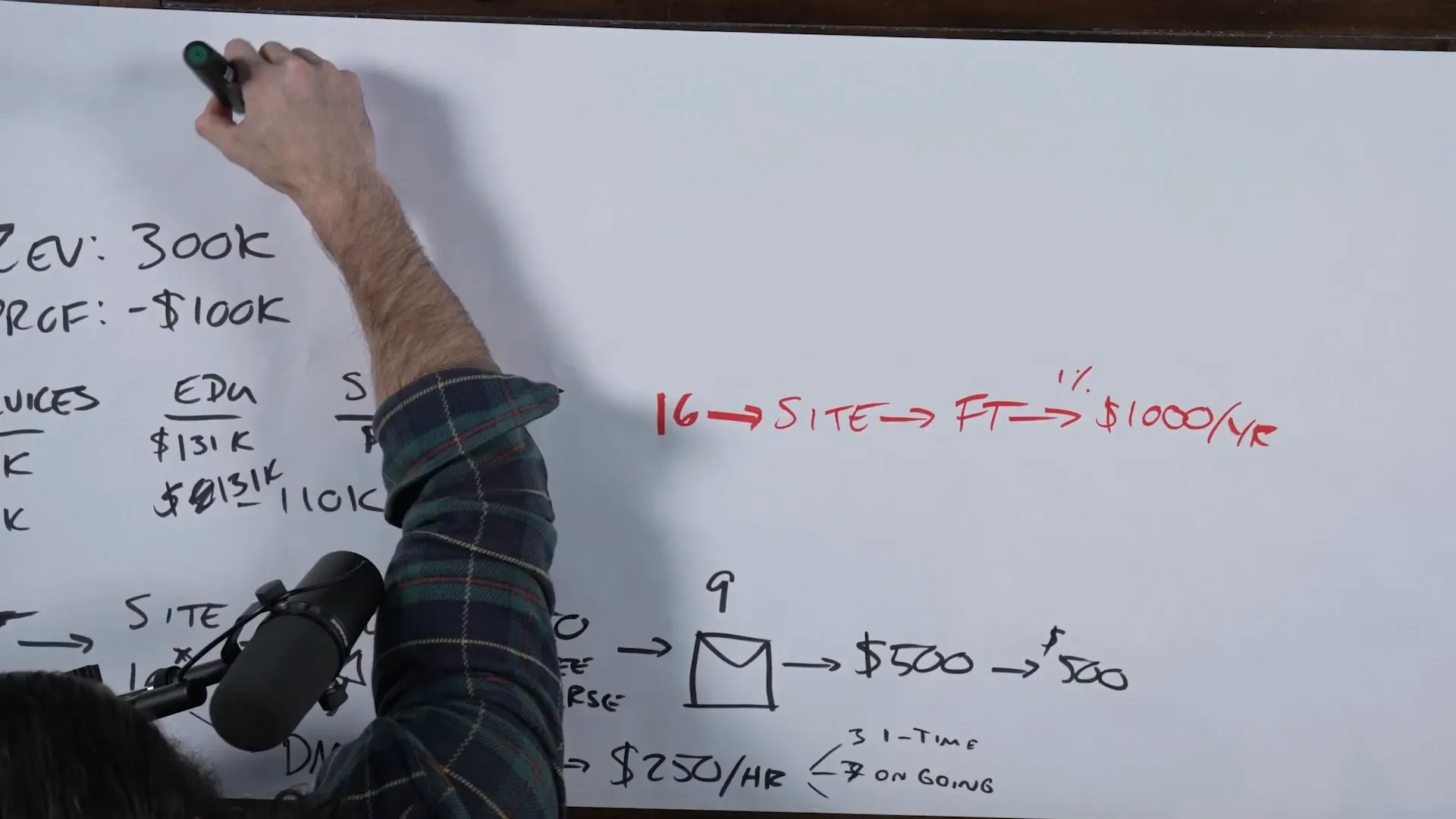
Implementing Effective Calls to Action
Calls to action (CTAs) are pivotal in guiding potential clients through the sales funnel. The attorney should embed CTAs at strategic points in their content. For example, placing a brief CTA at the 30% mark of videos can effectively capture viewer attention. This approach encourages viewers to engage without disrupting their experience.
Moreover, optimizing descriptions and pinned comments across platforms will ensure that potential clients have easy access to the next steps. The goal is to drive users toward direct engagement, such as DMs on Instagram, where personal connection can lead to conversions.
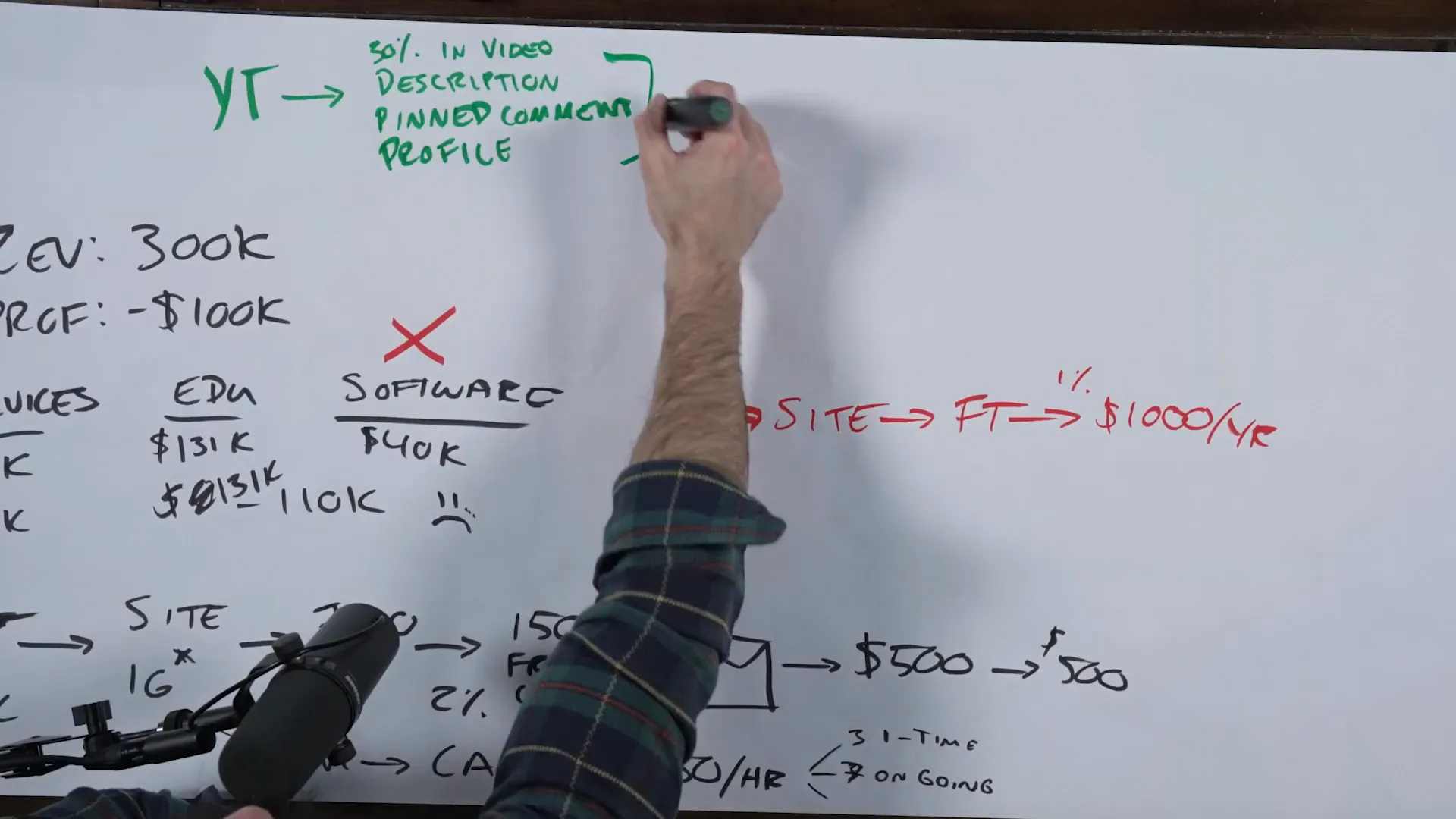
Pricing Strategy and Service Packages
In the legal industry, especially within niche markets like the Latin music sector, establishing a clear and effective pricing strategy is crucial. The attorney needs to pivot from an hourly billing model to a more outcome-based pricing structure. For instance, instead of charging clients by the hour, a flat fee of $5,800 for specific services can be more appealing. This model not only simplifies billing but also aligns the attorney's incentives with the clients' desired outcomes.
By focusing on outcomes, the attorney can present a value proposition that resonates with potential clients. For example, if a client is seeking assistance with contract negotiations, framing the service as a pathway to securing a lucrative deal can justify the price. This shift requires a reorganization of service packages to streamline offerings and avoid confusion around multiple pricing structures.

Creating Service Packages
To further enhance the pricing strategy, the attorney should consider developing tiered service packages. This approach allows clients to choose the level of service that best fits their needs and budget. For instance:
- Basic Package: Includes foundational legal services for new artists at a competitive price.
- Standard Package: Offers comprehensive contract reviews and negotiations.
- Premium Package: Provides personalized consultations and ongoing legal support.
Each package should clearly outline the outcomes clients can expect, enhancing perceived value and encouraging clients to opt for higher tiers. This not only increases revenue but also fosters stronger client relationships through better service alignment.

Leveraging Existing Leads and Traffic
Maximizing existing leads is a cornerstone of any successful business strategy. With a robust following on platforms like YouTube and Instagram, the attorney can capitalize on this traffic to generate more leads. The current model shows that approximately 800 new followers are gained each month, which translates to a significant opportunity for lead generation.
To convert these followers into clients, the attorney should implement a structured approach. For instance, direct messaging new followers with a simple question—whether they are seeking entertainment or help—can effectively identify potential leads. Those who express interest in assistance can be categorized as leads for follow-up.
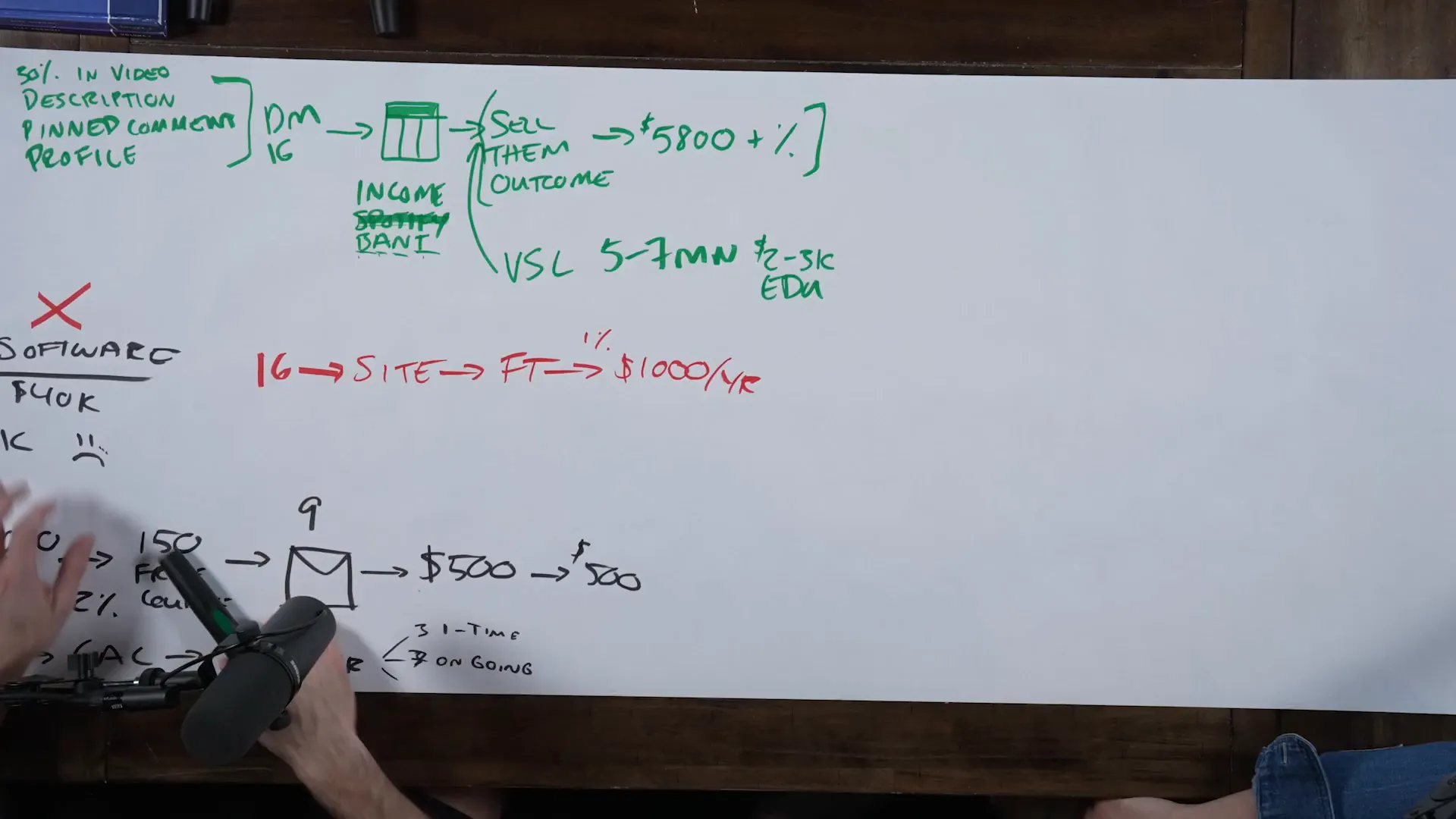
Optimizing Social Media Engagement
Social media isn't just a platform for content distribution; it's a vital tool for engagement and lead conversion. The attorney should focus on enhancing interactions on both YouTube and Instagram:
- YouTube: Embed calls to action (CTAs) within video content, directing viewers to DM on Instagram for consultations.
- Instagram: Utilize stories and posts to highlight client success stories and testimonials, creating a relatable narrative that attracts potential clients.
By optimizing these platforms, the attorney can create a seamless pathway from engagement to conversion, ultimately driving sales and strengthening brand loyalty.

Utilizing Content for Lead Generation
Content marketing plays a pivotal role in attracting and nurturing leads. The attorney can leverage existing content, such as educational videos and blog posts, to establish authority and trust within the industry. For example, creating a video series that addresses common legal questions in the Latin music sector can draw in potential clients who are seeking guidance.
Moreover, implementing a Video Sales Letter (VSL) can further enhance the lead generation process. This VSL should succinctly explain the services offered, showcase successful outcomes, and set clear expectations for potential clients. It serves as a powerful tool to pre-qualify leads before they enter the sales funnel.

Content Distribution Strategies
To maximize the reach of the content, the following strategies should be employed:
- Cross-Promotion: Share video content across multiple platforms, including Facebook and LinkedIn, to widen the audience reach.
- Email Marketing: Utilize email newsletters to distribute valuable content, offering insights that lead to consultations.
- Community Engagement: Foster discussions within online communities related to the Latin music industry, positioning the attorney as a go-to resource.
These strategies not only enhance visibility but also help in building a community around the brand, increasing the likelihood of referrals and repeat business.
Conclusion and Next Steps
Revitalizing a struggling business requires a multifaceted approach that encompasses pricing strategy, lead generation, and content utilization. By implementing an outcome-based pricing model and developing clear service packages, the attorney can simplify client interactions and enhance perceived value. Furthermore, leveraging existing leads through optimized social media engagement and effective content marketing will create a steady stream of potential clients.
As the next steps, it’s vital to:
- Redefine service offerings based on client needs and outcomes.
- Implement a targeted lead generation strategy utilizing social media and content marketing.
- Monitor results and adjust strategies based on performance metrics.
By taking these actions, the attorney can set the foundation for a thriving practice, ultimately leading to increased profitability and the ability to serve more clients effectively.